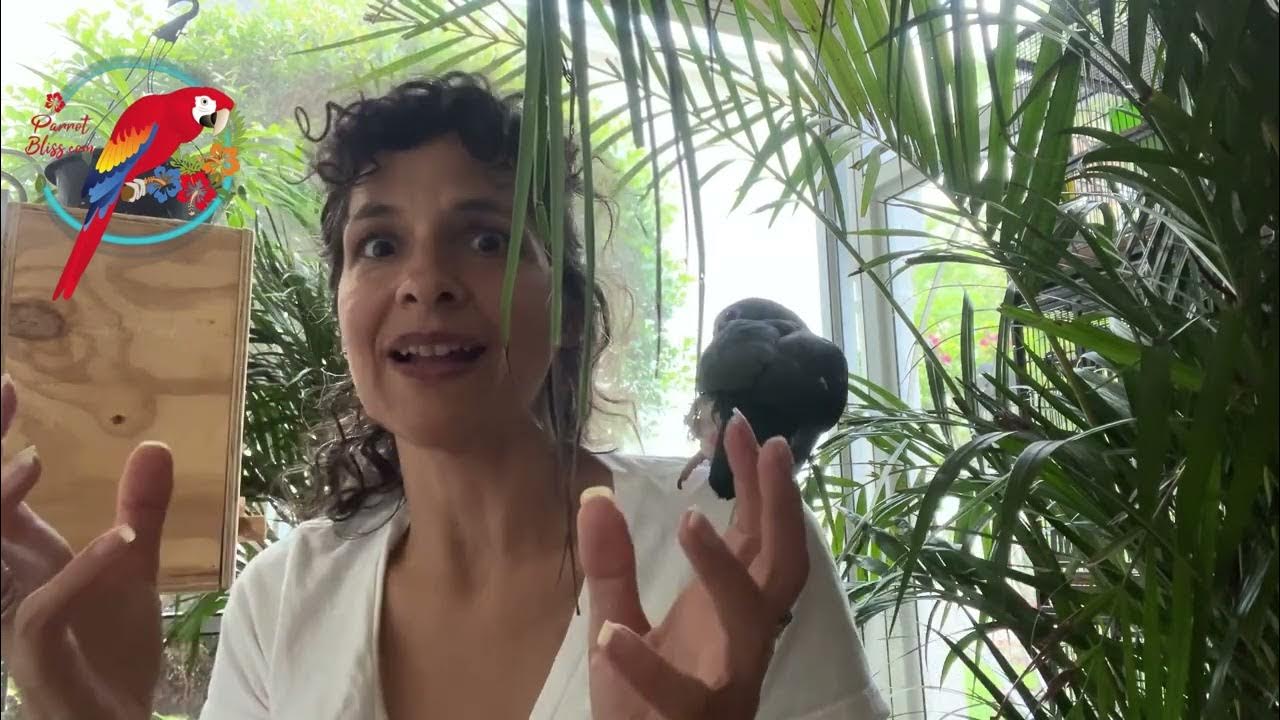Meet the Kākāpō: The World's Most Hilarious Bird Species
Summary
TLDRThe kakapo, a critically endangered parrot native to New Zealand, stands out among its peers as the only flightless parrot species. With its unique characteristics like a robust body, strong legs, and nocturnal behavior, it has adapted to a life of walking and climbing. Despite facing numerous threats from human activities and predators, conservation efforts have successfully increased its population from a mere 50 to over 250. The bird's fascinating breeding habits, including its lek system and the use of an 'ejaculation helmet' for a human-raised kakapo named Srao, highlight the challenges and dedication involved in its recovery.
Takeaways
- 🐦 Parrots are birds with a curved beak and zygodactyl feet, but the kakapo is unique among them.
- 🌿 The kakapo is critically endangered and is the only parrot that cannot fly due to its small wings, lack of a wishbone, and large pelvis.
- 🏞️ Native to New Zealand, the kakapo is a nocturnal bird that walks and climbs well but does not fly.
- 🌳 Kakapos have a slow metabolism and are herbivores, surviving on vegetation and fruit, particularly the remu fruit.
- 🌑 They are one of the only two parrot species that are nocturnal, which helps them avoid daytime predators.
- 🐾 When threatened, kakapos try to blend in with their environment rather than fly away, which can be ineffective against certain predators.
- 🔍 Humans have negatively impacted kakapos through hunting, deforestation, and the introduction of non-native species like deers, cats, rats, and stoats.
- 🥚 Kakapos have unique breeding habits, including lekking behavior and long, loud mating calls to attract females.
- 🧬 Inbreeding is a problem for kakapos, leading to low fertilization rates, and efforts are being made to increase genetic diversity.
- 🆘 Conservation efforts, including the kakapo recovery program, have successfully increased the population from 50 to over 250 birds.
Q & A
What is unique about the kakapo parrot?
-The kakapo is unique because it is the only parrot that cannot fly, has a slow metabolism, and is nocturnal.
Why are kakapos unable to fly?
-Kakapos are unable to fly due to several factors: their wings are small relative to their body size, they lack a wishbone which supports flight, and they have a larger pelvis and strong thighs that make them better walkers and climbers.
How do kakapos use their wings if they can't fly?
-Although kakapos can't fly, they use their wings for balance and jumping, and they can glide down a few meters using their wings as a mini parachute.
What is the significance of the kakapo's nocturnal behavior?
-Kakapos are nocturnal, which means they are active at night. This behavior is advantageous as it allows them to avoid many of their predators that are active during the day.
How does the kakapo's diet influence its reproductive behavior?
-The kakapo's diet, particularly its reliance on the remu fruit, affects its reproductive behavior. They may not mate for up to 5 years if the fruit is not available, as it is crucial for their mating rituals.
What challenges do kakapos face in their breeding system?
-Kakapos face challenges in their breeding system due to inbreeding, which results in less than half of the eggs being fertilized. They also exhibit a lekking system where males compete to attract females with loud mating calls.
What is the role of the 'ejaculation helmet' in kakapo conservation efforts?
-The 'ejaculation helmet' was a tool invented to help a specific kakapo named Srao, who had difficulty mating due to identifying as human. It was used to collect his sperm for artificial insemination to increase genetic diversity.
How has human activity impacted the kakapo population?
-Human activities, such as hunting, deforestation, and the introduction of predators like cats, rats, and stoats, have significantly reduced the kakapo population. However, conservation efforts have helped increase their numbers from a low of 50 to over 250.
What is the significance of the remu fruit to the kakapo's survival?
-The remu fruit is vital to the kakapo's survival as it is a key part of their diet. The availability of this fruit influences their mating behavior, and a lack of it can lead to years without mating.
How have conservation efforts improved the kakapo's breeding success?
-Conservation efforts have improved the kakapo's breeding success by introducing artificial insemination to increase genetic diversity, using smart egg technology to incubate eggs, and providing a rich food supply, particularly remu fruit.
What is the current status of the kakapo population?
-As of 2019, the kakapo population has increased to over 250 birds due to successful conservation efforts, including breeding programs and habitat protection.
Outlines

Этот раздел доступен только подписчикам платных тарифов. Пожалуйста, перейдите на платный тариф для доступа.
Перейти на платный тарифMindmap

Этот раздел доступен только подписчикам платных тарифов. Пожалуйста, перейдите на платный тариф для доступа.
Перейти на платный тарифKeywords

Этот раздел доступен только подписчикам платных тарифов. Пожалуйста, перейдите на платный тариф для доступа.
Перейти на платный тарифHighlights

Этот раздел доступен только подписчикам платных тарифов. Пожалуйста, перейдите на платный тариф для доступа.
Перейти на платный тарифTranscripts

Этот раздел доступен только подписчикам платных тарифов. Пожалуйста, перейдите на платный тариф для доступа.
Перейти на платный тарифПосмотреть больше похожих видео

New Zealand sets target to make country 'predator-free' by 2050

Tenali Rama 👴🏻 Ep 3, Parrot Keeper | Tenali Rama & Krishnadevaraya Moral Story | Spiritual TV

चिड़िया कहानी | rani chidiya | cartoon cartoon hindi| @vanposhkahaniyan

Is There a Medium-sized 🦜 Parrot That’s Got All That? #parrot_bliss #parrot

ALICE NO PAÍS DAS MARAVILHAS 3 (Lewis Carroll) Capítulo 3/12: "Uma Corrida Eleitoral..."

World’s Longest Banana | Andaman and Nicobar Islands | Daily Current News | Drishti IAS
5.0 / 5 (0 votes)
